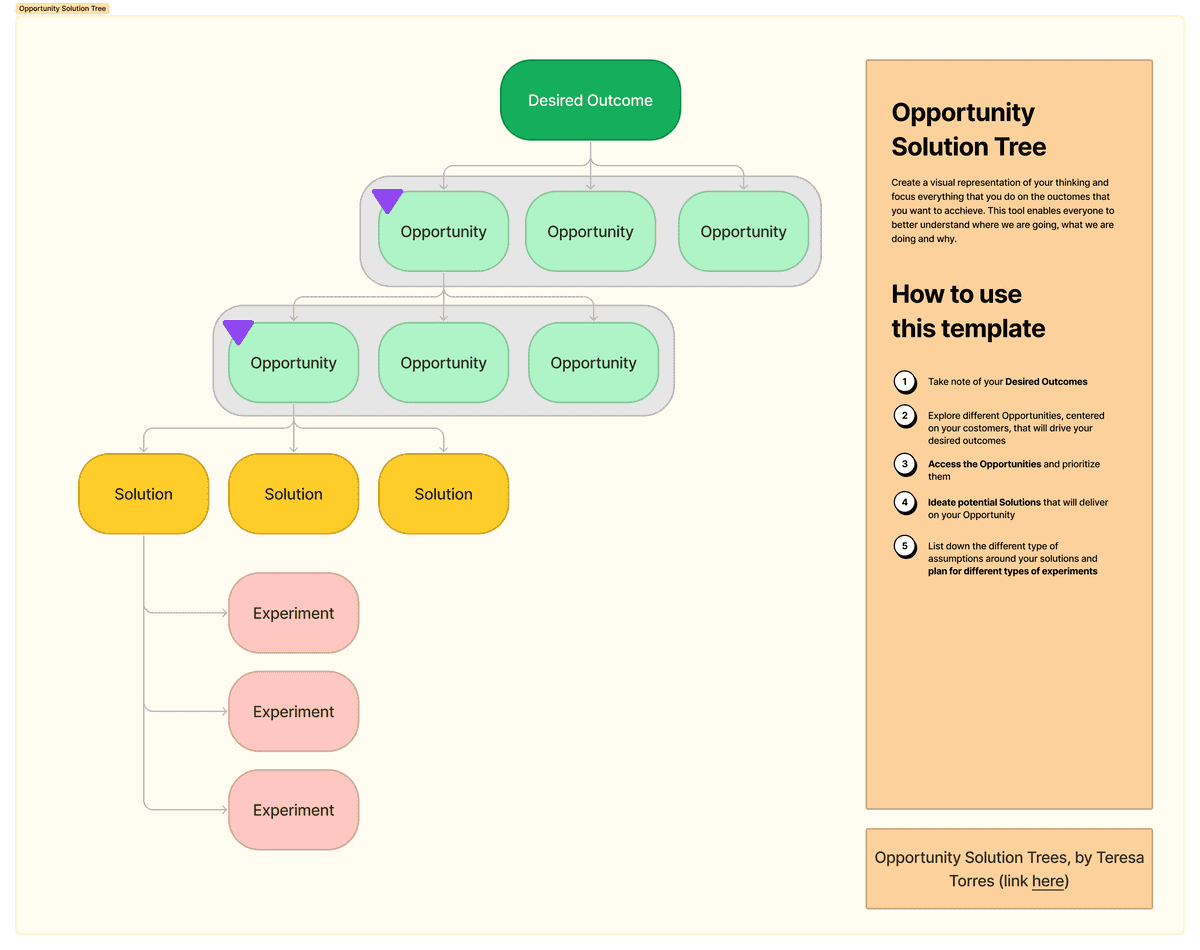Opportunity Solution Tree
July 14, 2022 . 4 min read
outcomes
marketplace
growth
Experimentation is one of the most important things to do when building digital products.
Personally, I am a big proponent of experimentation programs and doing ab testing in order to grow the business and learn more about the users, however one of the biggest challenges with that is figuring out what to test and more importantly, making sure that we connect the experiments with business outcomes the organization wants to achieve.
For already existing flows and journeys the thought process should be simple, you should be fixing the biggest leaks on your customer journey. The overall idea would be to think about experiments that can keep the users on track and / or bring them back.
We also want to connect the experiment with a business outcome, with our OKR's or with our north start metric so that we acting on something that will lead our business forwards and impact out overall results.
Making sure that our tests are aligned to our OKRs is not necessarily easy, we can get busy with a technical experimentation that is not necessarily aligned with our OKRs or busy with a prototype for a new marketing effort on a new business vertical that is not part of the expected business outcomes.
This is where I found the opportunity solution tree framework, by Teresa Torres very helpful - It pushes the thought process to evolve around the (1) business outcome that we want to achieve, (2) to map the opportunities related to business outcomes, (3) to think about the solutions that would make sense and (4) put together experiments that would be helpful to prove / disprove our solutions.
Opportunity Solution Tree
After reading Teresa's book - Continuous Discovery Habits - I also learnt that this framework (more like a mindset to be honest) can be very helpful in a couple of different ways:
- By focusing to be outcome driven you get out of the feature factory conundrum;
- Considering pain points, needs, wants or desires as opportunities grounds everything around the user;
- Contrasting and comparing the opportunities will force a prioritization that is outcome-driven and not top-down;
- By validating the solutions with a couple of experiments we de-risk our delivery;

Outcomes
It should be the reason why we are busy with building our product and services. It is critical that we are totally aligned around the overall outcomes and that any opportunity we are working on will directly impact the outcome.
There are endless debates around outcomes vs outputs and by and large we should always focus on outcomes, however there are moments in time where we should focus our efforts on outputs.
Opportunities
Opportunities can be problems, needs, pain points or even desires that you and the team have identified through customer interviews, research and analysis.
There are several ways to capture the opportunities that we should be working and generally speaking, nothing really beats talking to users.
Solutions
Once we pin down the different opportunities and organize them as we go, we will need to move into the solution space and start to describe the different solutions that tackle each individual opportunity.
Experiments
Experiments will help us get clarity in understanding if a given solution would work and it is important to test - prove or disprove - if our assumptions are accurate. What's more, we could design small experiments that could will help de-risk our solutions before we actually spend all the time and money building.
Learn more
If you want to lear more about opportunity solutions tress head over to Teresa's blog - producttalk
More posts about Product
Subscribe
No spam! Only good stuff!